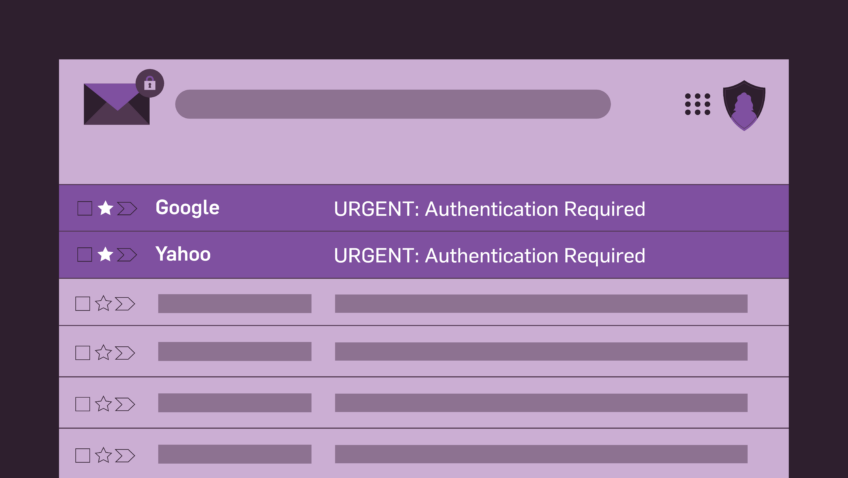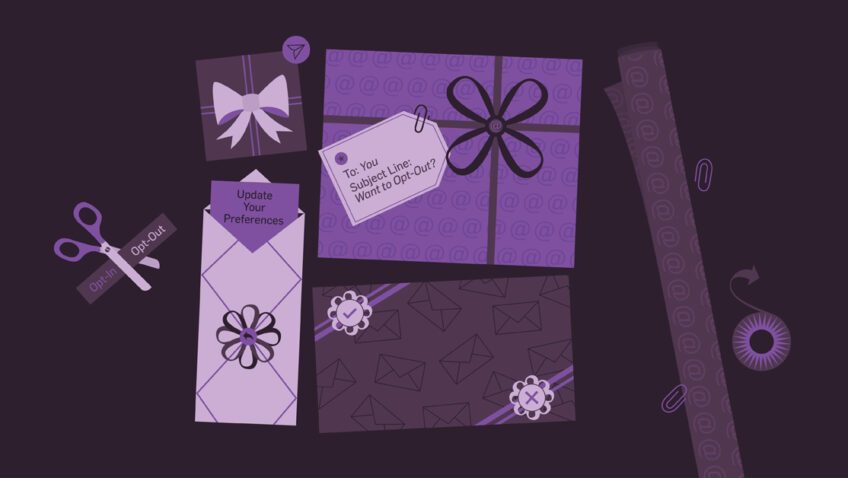Key Takeaways from Arts Industry Data Analysis: Pandemic Response
What is the impact of the pandemic on arts marketing? Capacity Interactive conducted a survey of 53 diverse arts and cultural organizations, collecting data from FY2019 and calendar year 2020, with WolfBrown as research consultants advising on the methodology, survey design, data visualization, and analysis.
We’ve outlined key takeaways to help you understand the data, and posed key questions to help you build stronger foundations for your organization. If you like this blog post, be sure to check out this livestream recording with more insights and in-depth strategic recommendations for the months ahead.
Before you start reading, though, treat yourself to a deep breath: we are a year into this pandemic and it has had a profound impact on all of our lives. All of the data we are about to explore is inextricably tied to the loss and trauma we’ve endured to varying degrees. Give yourself some grace, snuggle a nearby furry friend if you have one, and get ready to dive into the data.
Takeaway #1: The Pandemic Accelerated Digital Strategy
When it comes to digital strategy, many arts organizations had to make years’ worth of digital progress in a matter of weeks or months.
 From FY2019 to December 2020, there was a 49% increase in respondents who felt their organizations had strong coordination across departments. This is a huge shift in the way institutions are thinking about digital! In the new virtual world we’re living in, more organizations have broken down silos where fundraisers and artistic teams work more closely with marketers to connect with patrons. Your audience sees you as one organization, not a collection of departments—and 75% of consumers expect consistent interactions across departments.
From FY2019 to December 2020, there was a 49% increase in respondents who felt their organizations had strong coordination across departments. This is a huge shift in the way institutions are thinking about digital! In the new virtual world we’re living in, more organizations have broken down silos where fundraisers and artistic teams work more closely with marketers to connect with patrons. Your audience sees you as one organization, not a collection of departments—and 75% of consumers expect consistent interactions across departments.
Key Question to Consider
How can you work together interdepartmentally to create holistic digital engagement to your audience, even after they’re able to return to your gallery or venue?
With marketing budgets reduced (more on this later) and audience behavior shifting in response to stay-at-home orders, arts marketers have been leveraging the cost efficiency and behavioral targeting capabilities of digital tools.
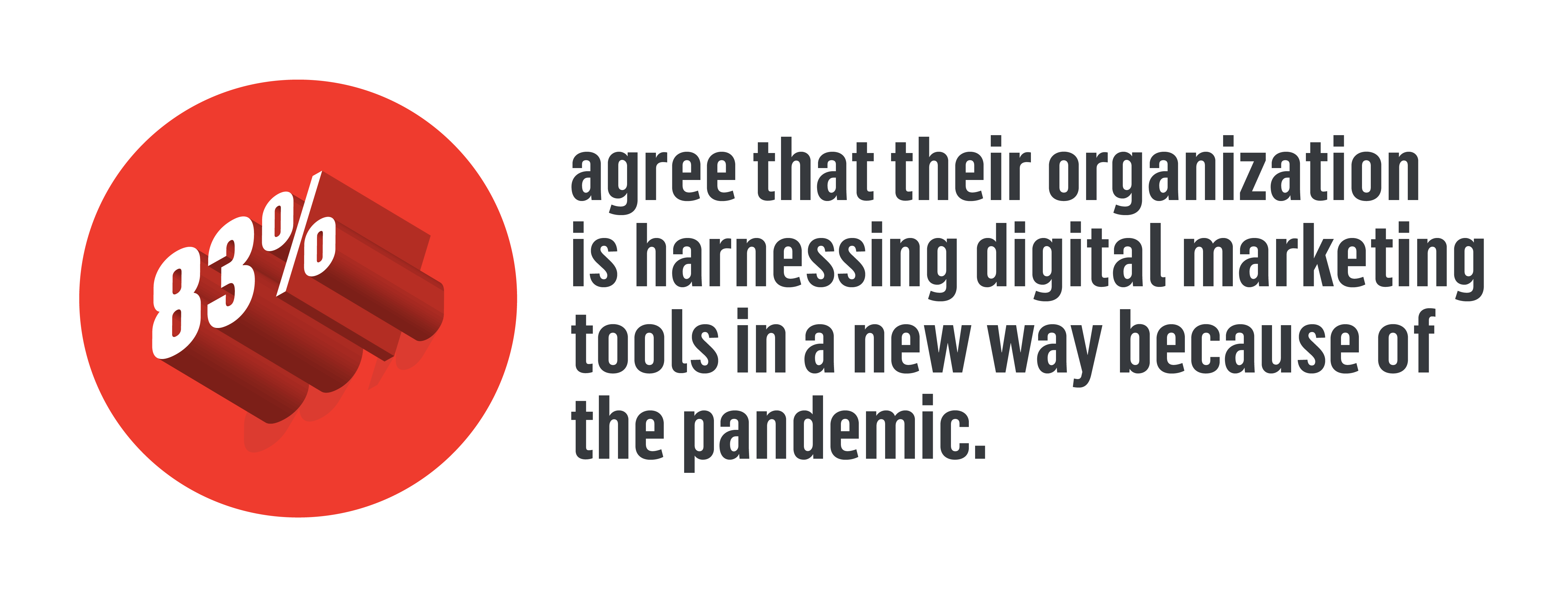 In fact, 68% of consumers say that the pandemic has elevated their expectations of companies’ digital capabilities. That means if you’re not using digital tools innovatively, you may be falling behind the curve.
In fact, 68% of consumers say that the pandemic has elevated their expectations of companies’ digital capabilities. That means if you’re not using digital tools innovatively, you may be falling behind the curve.
Key Question to Consider
What new digital tactics have you adopted during the pandemic that can also be used to level up your long-term marketing strategy?
Takeaway #2: Digital Marketing Platforms Evolved
Not only did arts organizations’ digital strategy evolve, but their marketing mix shifted, as well. Facebook and Instagram advertising retained more arts organizations’ media spend than other channels did, particularly direct placements and programmatic display.
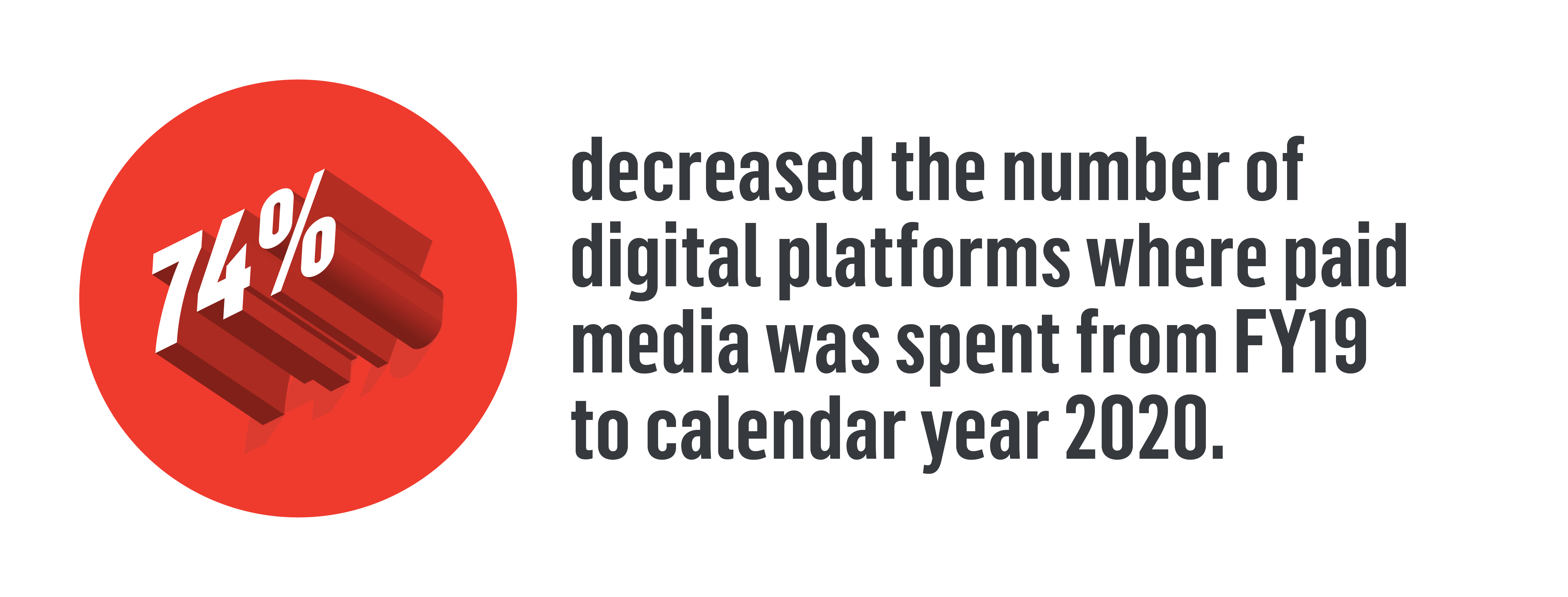
Platform Spend
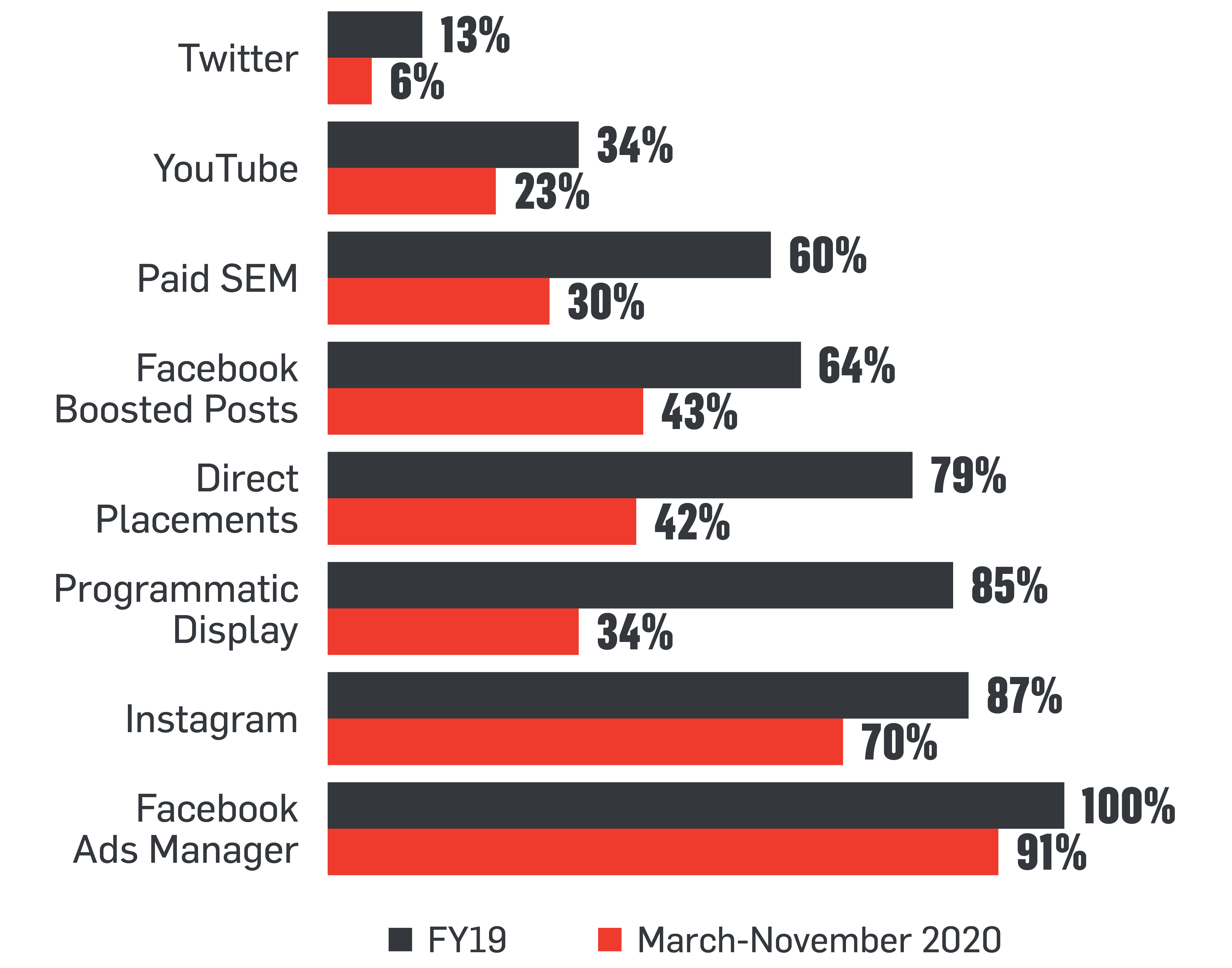 For now, Facebook and Instagram may be the best place to meet your patrons where they are. According to our 2019 Performing Arts Ticket Buyer Media Usage Study, performing arts patrons are more likely to use these platforms at least daily than they are any other social media platform.
For now, Facebook and Instagram may be the best place to meet your patrons where they are. According to our 2019 Performing Arts Ticket Buyer Media Usage Study, performing arts patrons are more likely to use these platforms at least daily than they are any other social media platform.
Platform Users
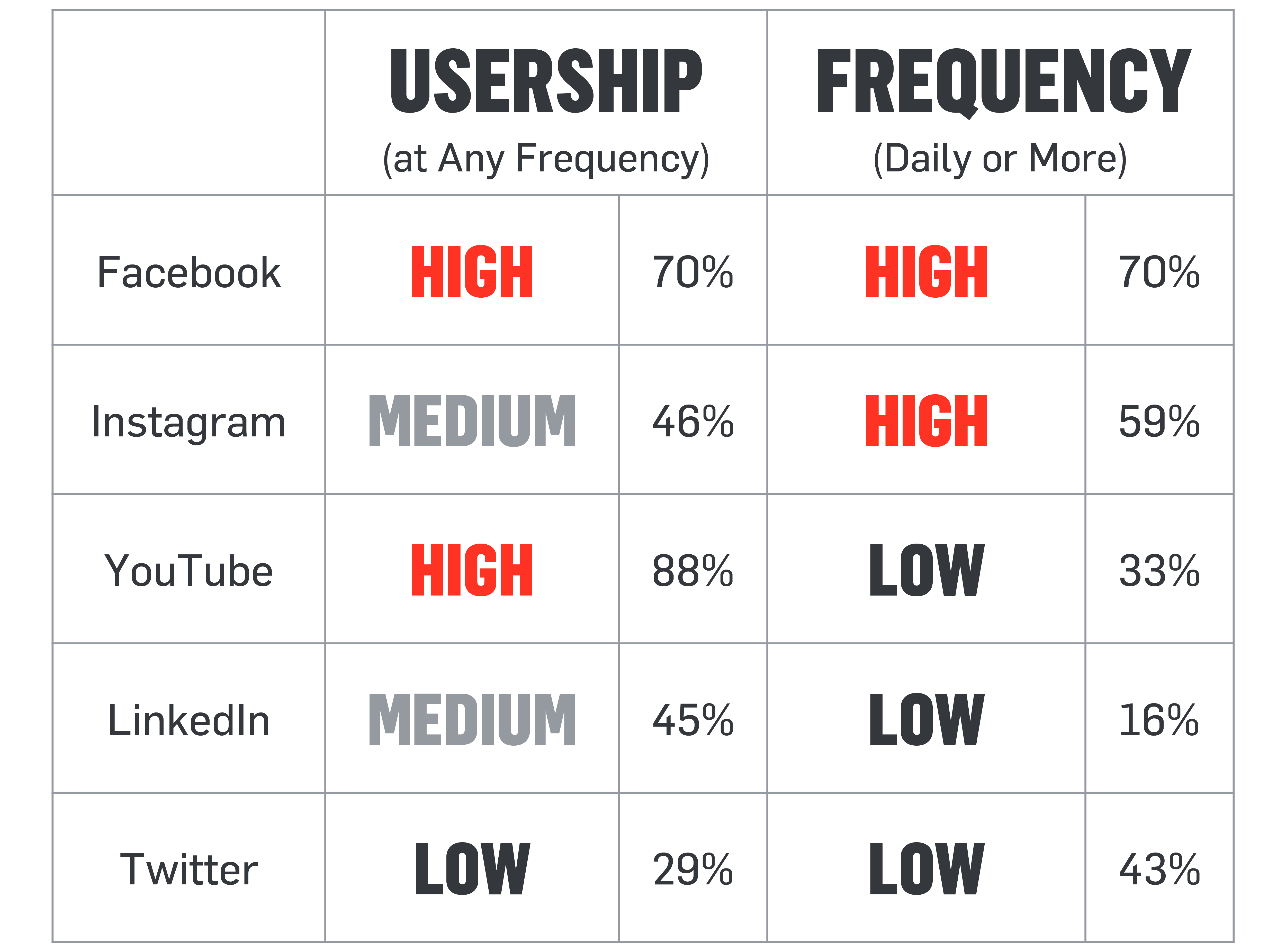 Interested in participating in the 2021 Ticket Buyer Study? Get in touch with us!
Interested in participating in the 2021 Ticket Buyer Study? Get in touch with us!
Programmatic display may have seen a more dramatic decrease than direct buys because many organizations had direct placement contracts with their local media outlets already in place.
Key Question to Consider
Have you evaluated direct placement spends to evaluate if that media spend can have a greater impact on other platforms? Our research has shown that you might be better off without it.
Takeaway #3: A Mix of Paid and Free Virtual Programming Works
It’s the question on every arts administrator’s mind: “Should I be charging for digital programming or offering it for free?” In our survey, we asked organizations who were producing virtual artistic programming about their approaches.
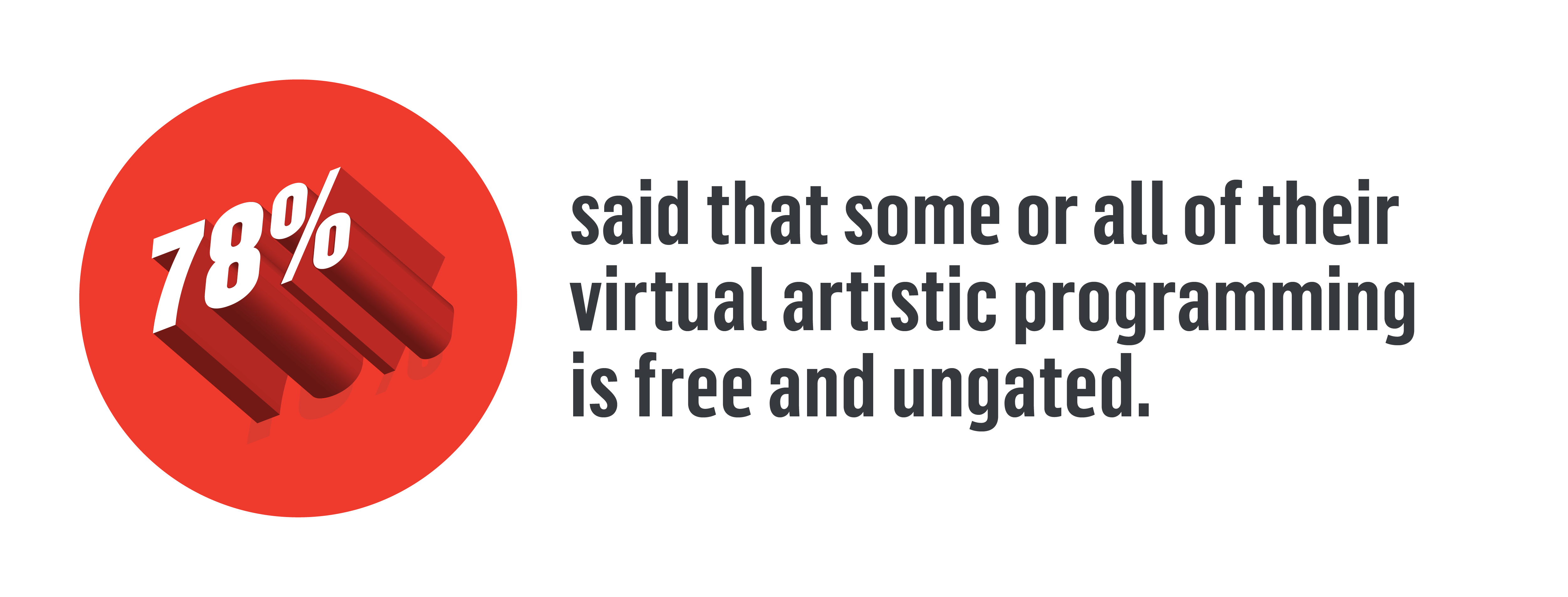 There’s an appeal to offering content on a public platform where it’s accessible to many, but a high view count alone won’t help you grow your audience if you can’t communicate with them after they’ve watched your video.
There’s an appeal to offering content on a public platform where it’s accessible to many, but a high view count alone won’t help you grow your audience if you can’t communicate with them after they’ve watched your video.
Key Question to Consider
How are you using free and ungated content to increase lead generation? Even if your programming is free, you should consider asking your audience to register.
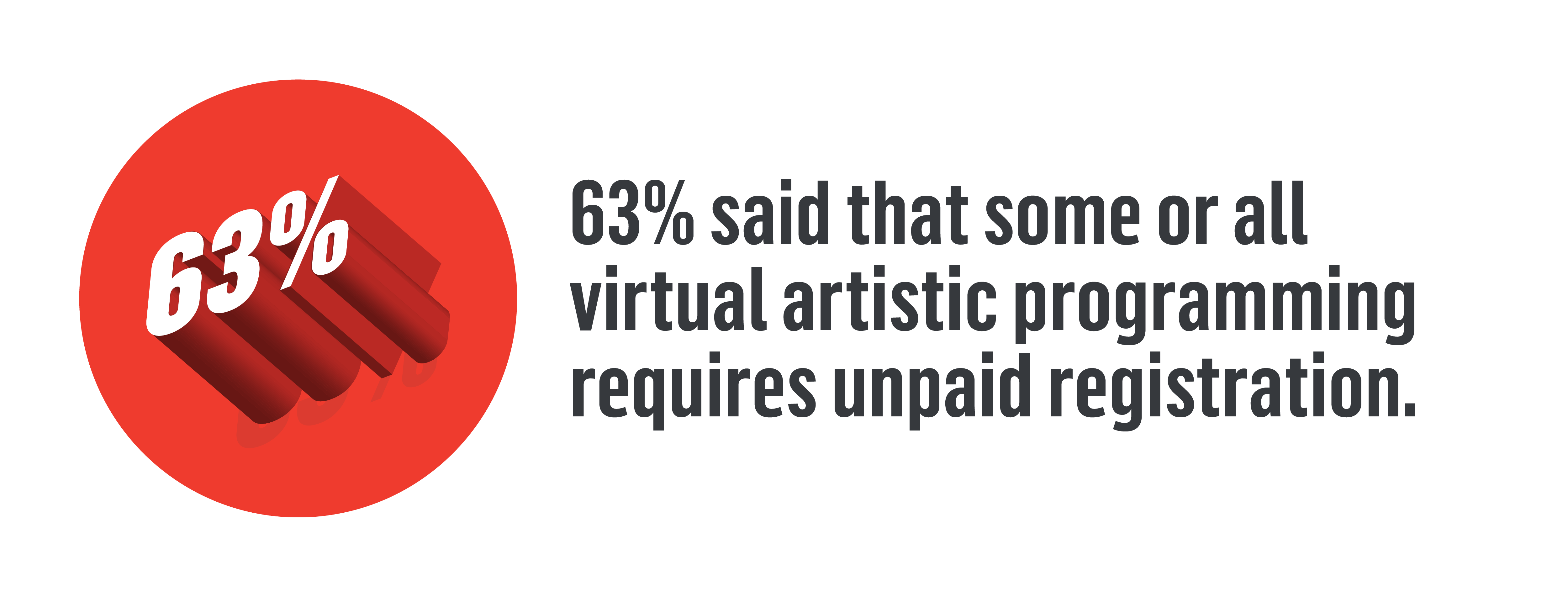 Collecting email addresses also allows you to keep track of which events your existing patrons attend, which can help you segment your email list to provide more anticipated, relevant, and personal messaging.
Collecting email addresses also allows you to keep track of which events your existing patrons attend, which can help you segment your email list to provide more anticipated, relevant, and personal messaging.
Key Question to Consider
How do you plan to engage with your new leads now that you have permission to contact them?
 Including a variety of free and paid digital events is important for your organization’s bottom line (you can learn more in this guest blog post). Your digital programming is your marketing—be sure to use it to spin your flywheel and activate evangelists for your organization.
Including a variety of free and paid digital events is important for your organization’s bottom line (you can learn more in this guest blog post). Your digital programming is your marketing—be sure to use it to spin your flywheel and activate evangelists for your organization.
Key Question to Consider
Are you creating social content that encourages sharing and helps fans spread the word about your organization?
Takeaway #4: Arts Marketers are Overworked and Under-Resourced
Digital strategy and media spending aren’t the only things that have changed in response to the pandemic. All the quick pivots (sorry to bring up the “P” word!) and shifts to digital programming have left arts marketers with more on their plates, but our data shows that they’re accomplishing this with fewer resources.
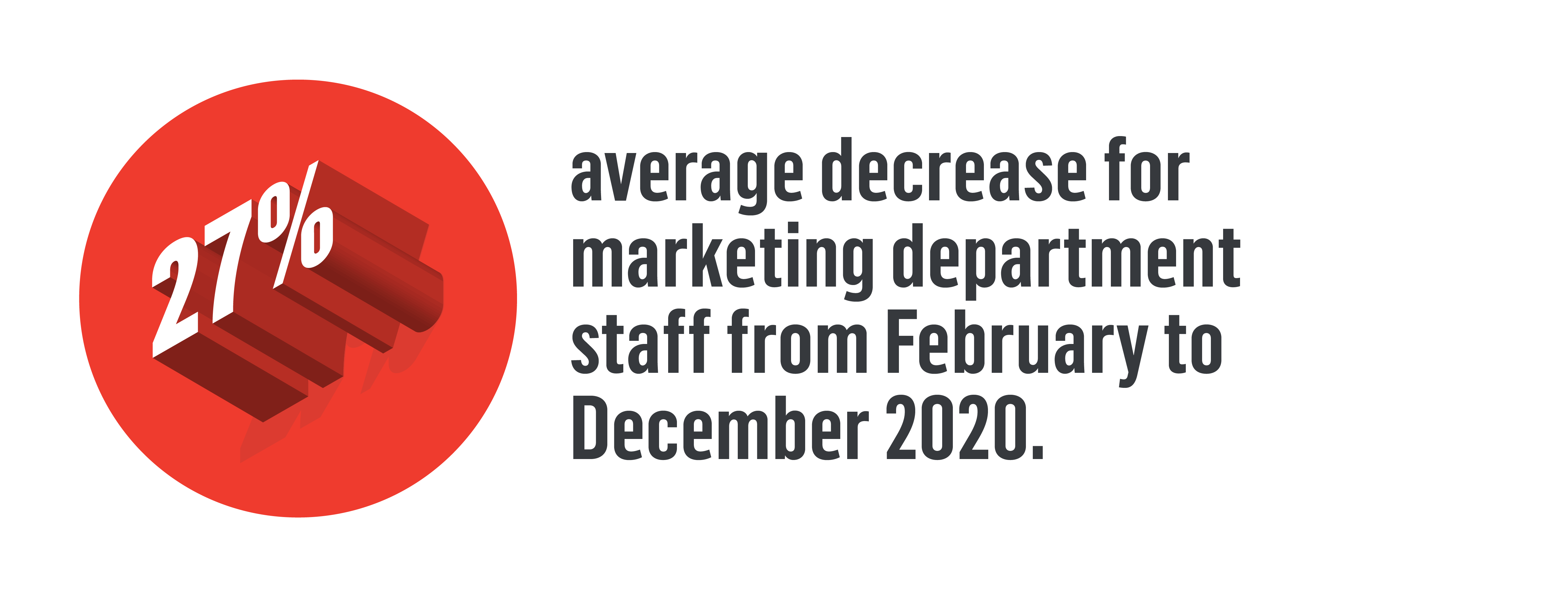 This is quite significant. Whether you were directly impacted by furloughs or layoffs or have been able to continue working and coping with the loss of institutional knowledge, working capacity, and camaraderie, we see you.
This is quite significant. Whether you were directly impacted by furloughs or layoffs or have been able to continue working and coping with the loss of institutional knowledge, working capacity, and camaraderie, we see you.
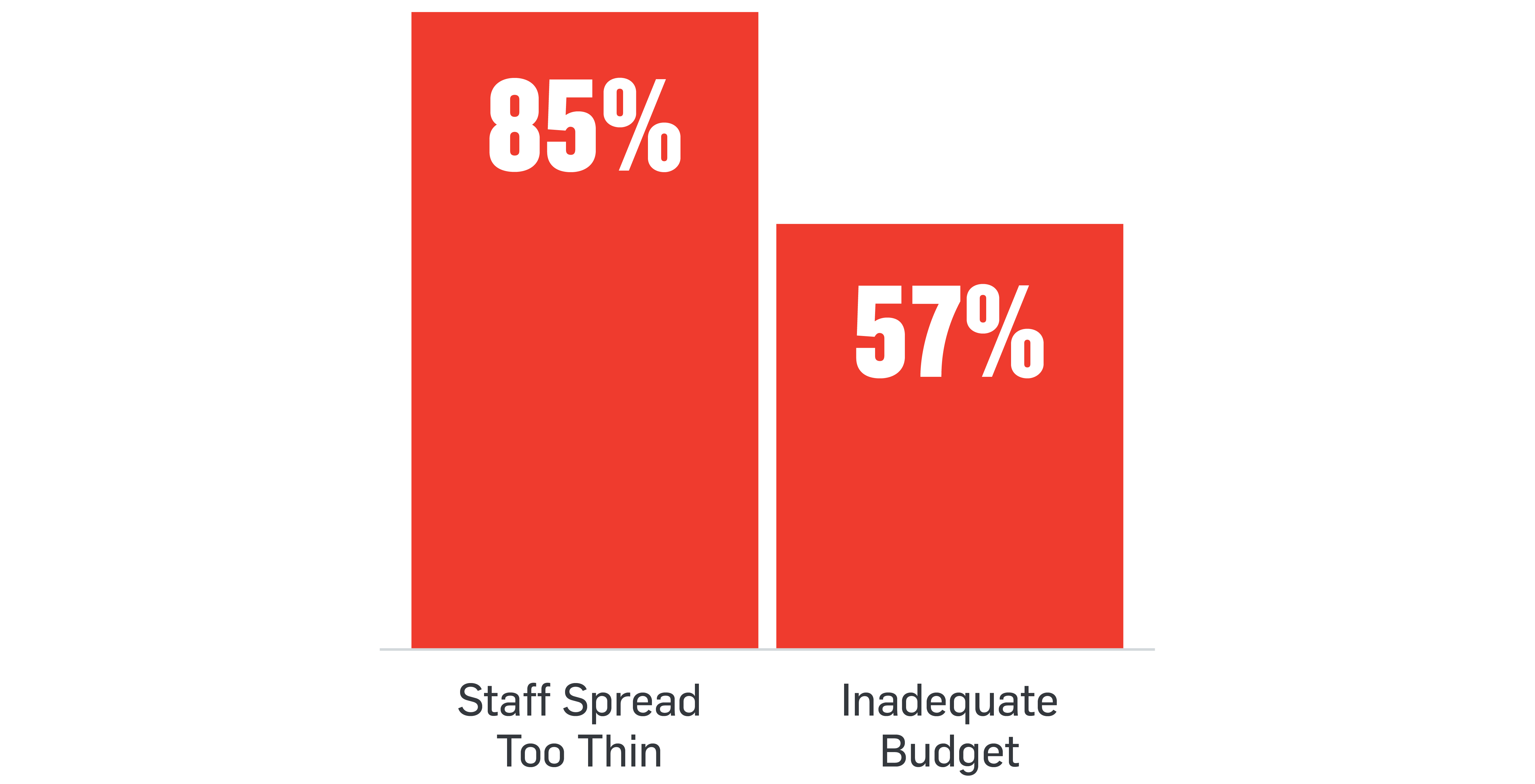
Marketing teams were spread too thin and working with reduced budgets in FY2019, meaning there was already a significant resourcing problem before the pandemic began. The reduction in marketing teams exacerbated it further.
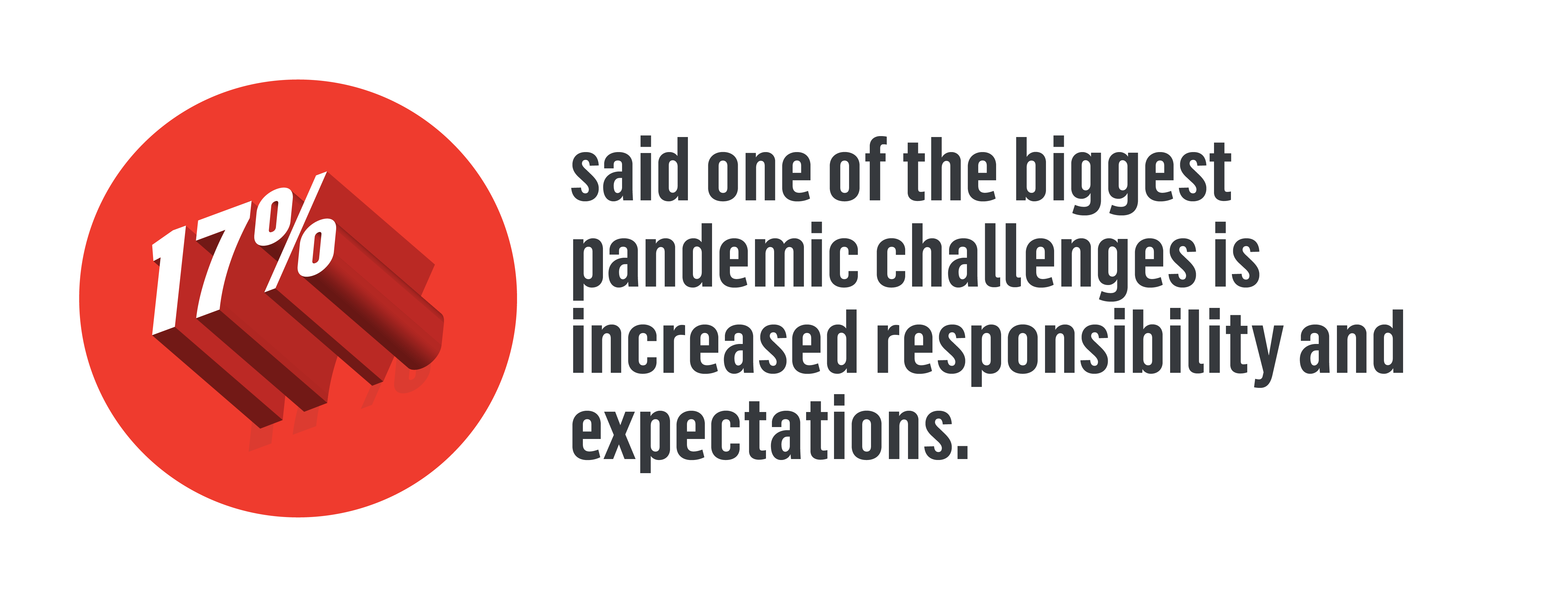 In an open-response question, 17% of respondents said that one of the biggest challenges they’ve faced during the pandemic is increased responsibility and expectations. It’s no exaggeration to say that arts marketers have been asked to do more with less. All of these expectations have real implications for arts marketers not only as professionals but also as people.
In an open-response question, 17% of respondents said that one of the biggest challenges they’ve faced during the pandemic is increased responsibility and expectations. It’s no exaggeration to say that arts marketers have been asked to do more with less. All of these expectations have real implications for arts marketers not only as professionals but also as people.
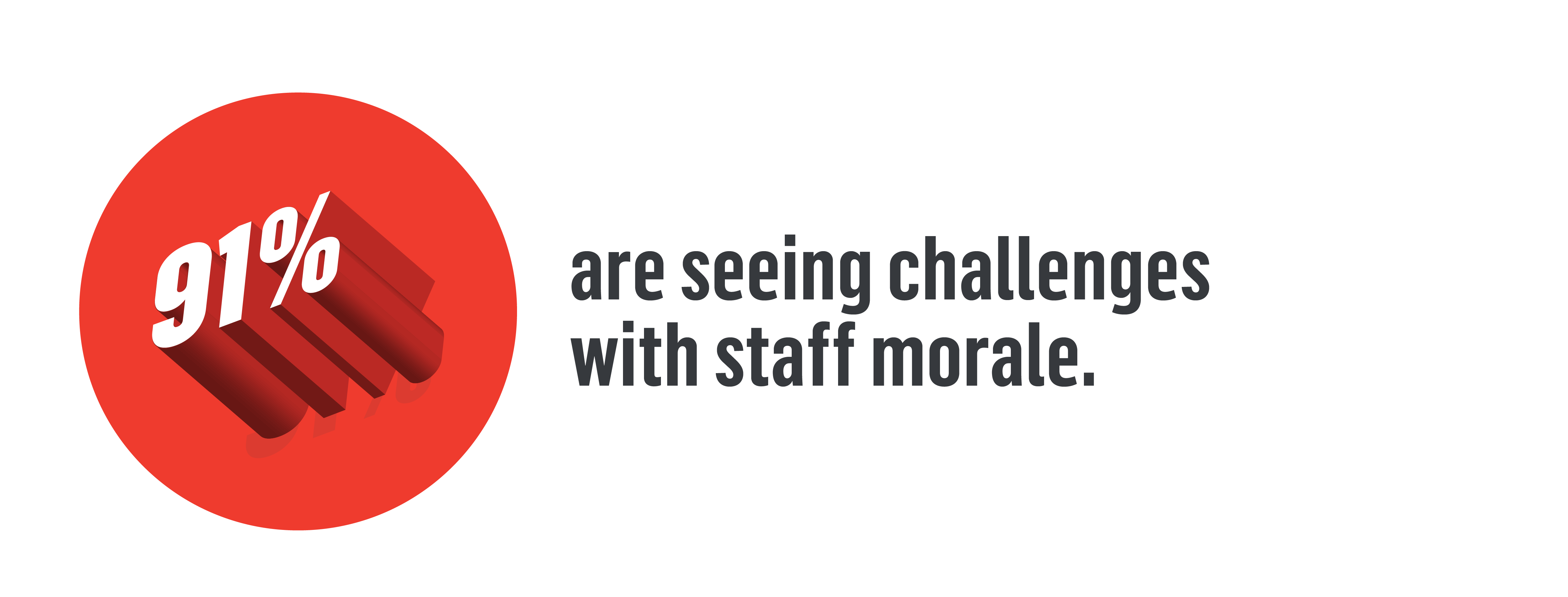
Key Questions to Consider
How can you set boundaries to protect your time and resources? If you’re not able to accomplish everything that’s expected of you and do it well—because, let’s face it, you’re only human—how can you communicate that to your leadership and work together to determine what projects are important enough to prioritize?
Outside of work, we are all still undergoing a massive collective trauma. Research has shown that the experience of living through the COVID-19 pandemic “can be understood as a traumatic stressor event capable of eliciting PTSD-like responses and exacerbating other related mental health problems.”
The amazing work you’re doing every day to help your organization get through the pandemic so you can continue to change lives through the power of the arts is so important, but you need to put your own oxygen mask on first.
Key Questions to Consider
If you’re the leader of an organization, how can you do better to center your team’s wellbeing and support their mental health? What responsibilities can you take off of everyone’s plates until you’re able to rebuild the size of your team?
If you aren’t a leader, you may have more power than you think. Find like-minded people in your organization. Share these insights with your leadership. Reach out to HR for support. And don’t forget to use PTO—just because you can’t travel doesn’t mean you don’t need time off!
With all that in mind, it’s time for one more deep breath before you close this tab and return to your inbox. We just covered a lot; what is one actionable insight you want to take away with you for today? What is an unanswered question you want to return to later?



